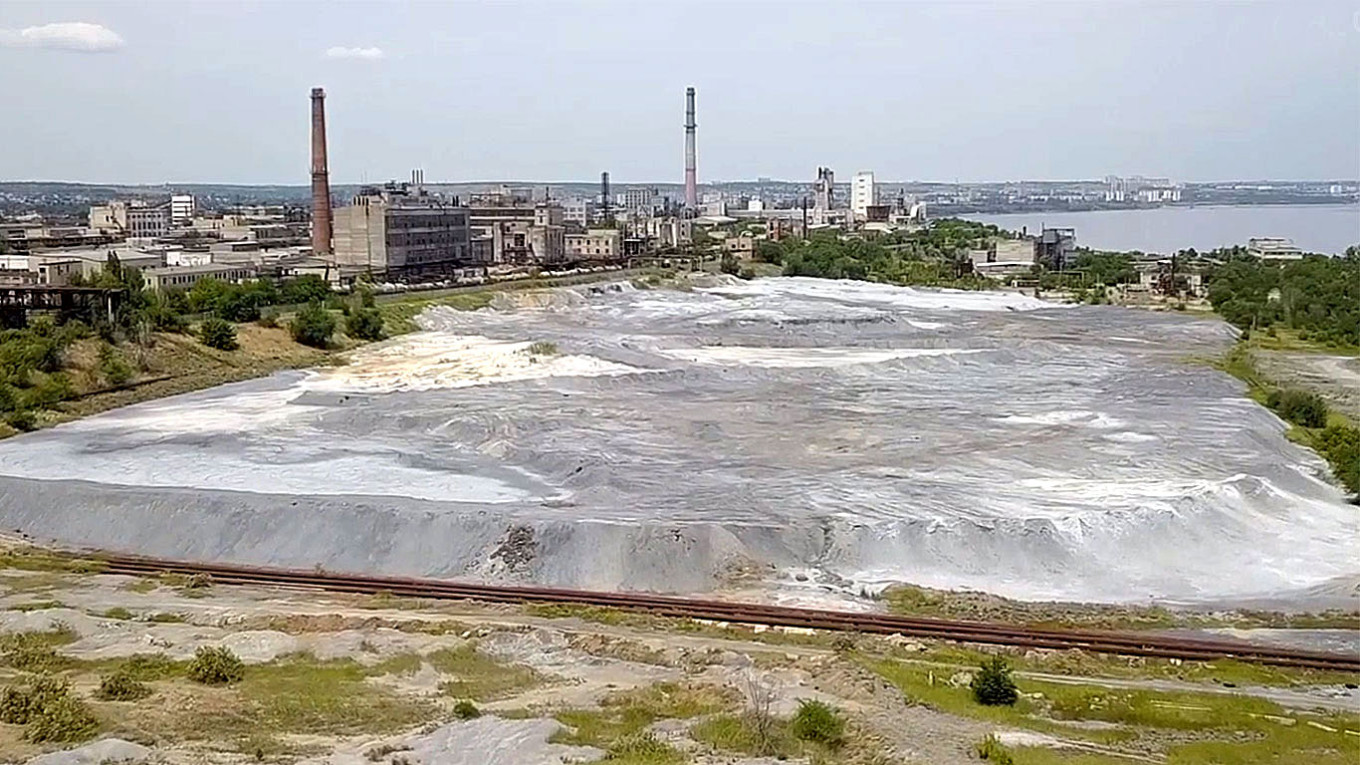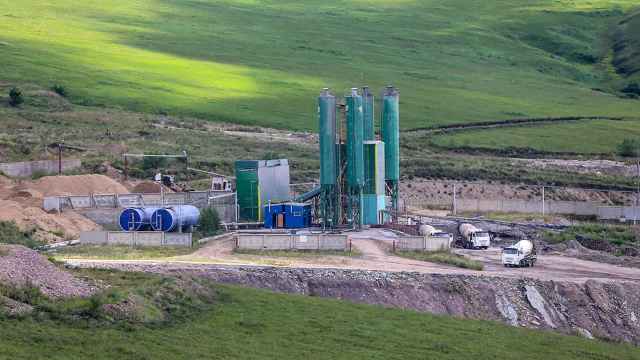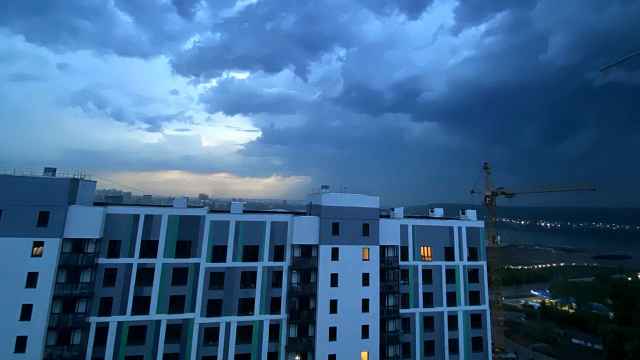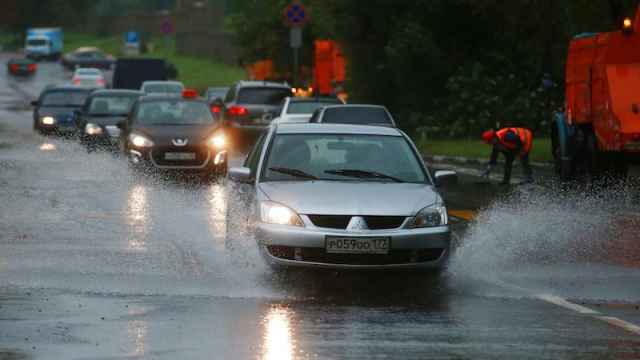The Volga River, one of Russia's major waterways and Europe's longest, holds significant economic and cultural importance for Russians. Stretching over 3,500 kilometers through central and southern Russia before meeting the Caspian Sea, this vital transportation artery traverses several urban centers, including Volgograd, a city of 1 million inhabitants.
Here, just 200 meters from the Volga’s shore, lies a fenced-off area spanning 28 hectares called Beloye Morye ("White Sea"). Despite its romantic name, the site is in fact a toxic dumping ground of the Khimprom factory, which produced chemical weapons during the Soviet era and was shut down in 2019.
"It's an absolute mess over there. The cocktail [of chemicals] is unbelievable,” environmental expert and public activist Elena Vasilyeva told The Moscow Times. “The horror is that it's located almost in the center of the city, with residential buildings nearby."
Beloye Morye is just one of the thousands of similar sites across Russia that are categorized as “accumulated environmental damage," such as abandoned industrial facilities and oil wells, old mines, quarries and illegal landfills. And if regional authorities had only the right to address these sites before, new regulations that take effect this month make it their obligation.
Some of these sites are remnants of the Soviet era and others have emerged in modern Russia — but all constitute a major challenge for authorities and are putting the health of millions at risk.
Beloye Morye started accumulating sludge in the mid-20th century and it now holds between 1.5 million to 3.5 million tons of waste, according to various sources. In an effort to neutralize this waste, authorities started filling the dumping ground with lime in the 1970s, which gave Beloye Morye its name.
The site leaks multiple substances into the environment in concentrations hundreds and thousands of times above safe levels, including mercury, phenol, and benzo[a]pyrene, according to the latest official document obtained by The Moscow Times.
Because the Volga's banks are elevated in this area, the spring meltwaters and rainfall from the hills inevitably carry the dangerous chemicals into the river.
“If you stand above this Beloye Morye, you can see how these little white whirls rise above it and drift toward the nearby residential area,” Vasilyeva said. “If this stuff washes away into the Volga, it will be a big problem for everyone.”
In 2021 Russia launched the General Cleanup Federal Project with a budget of 20 billion rubles ($206 million) to count abandoned environmental hazards across the country and, based on their impact on public health, determine the top priorities for reclamation.
"The General Cleanup is now operating at full capacity,” said Deputy Prime Minister Viktoria Abramchenko in 2022. “By 2024 … we will witness a tangible environmental result and set in motion not only the elimination of environmental damage but also the prevention of such hotspots."
While the Natural Resources Ministry’s list includes over 3,100 such sites, the actual number remains unknown and possibly reaches into the hundreds of thousands, veteran environmental expert Ivan Blokov told The Moscow Times, referring to information mentioned during a ministerial meeting he attended in the late 2000s.
“The authorities have recognized this problem for at least the last two decades, but in recent years, it has become more acute — waste has simply been piling up constantly, and its recovery has been less,” Blokov said.
The expert explained that some Russian companies, after accumulating a lot of waste, “pretend to go bankrupt,” leaving the responsibility for waste reclamation to the government. Additionally, waste containment solutions applied decades ago are beginning to fail.
“If a new sludge collector is built, it usually doesn't leak at first. But when it has been standing for 30-50 years, it starts to crack in some places, it leaks in others. Moreover, its owner disappears,” Blokov added.
By 2024, the General Cleanup project aims to reclaim 500 abandoned deep-hole wells, lift 213 sunken ships and eliminate environmental damage along the shores of Lake Baikal. Another federal project, Chistaya Strana ("Clean Country"), plans to rehabilitate hundreds more toxic sites by the same year.
Whether these state efforts effectively address the most significant environmental hotspots is yet to be seen. Experts pointed to the fact that some sites that have drawn officials' attention to date appear to pose relatively lower environmental risks.
For instance, ships submerged decades ago have become part of the ecosystem in some cases and could be left as is. However, they may be retrieved for the sake of appearances, an expert in the field who requested anonymity out of privacy concerns told The Moscow Times.
“To raise 200 ships — that's not a thousand objects scattered all over the tundra, reachable only by helicopter,” they said. “But the ships can be sailed up to and retrieved, the technology is there, and the image for the theater of one spectator [Russian president] is quite easily achieved.”
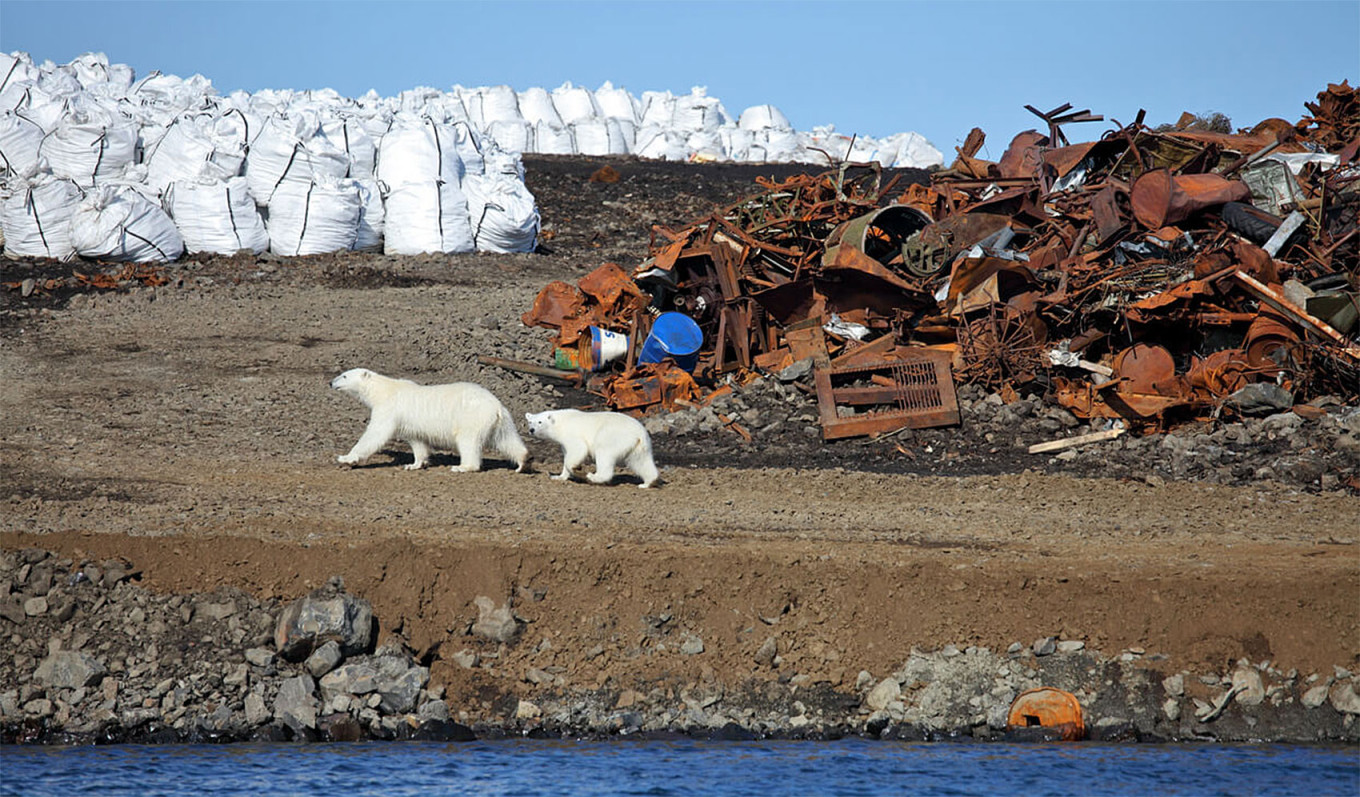
In the Russian Arctic alone, waste sites cover around 2,500 hectares, officials said, while environmental groups uncovered nearly 400 sites there in 2017, according to documents obtained by The Moscow Times.
The empty barrels scattered across the tundra following the decline of Soviet industry and military presence in the Arctic may seem like mere eyesores, but some may still be leaking oil products. Furthermore, the seabed of the western Arctic is the resting place for approximately 18,000 containers of radioactive waste and other nuclear legacy objects.
“Petroleum products and polychlorinated biphenyls (PCBs) are carcinogenic,” the anonymous expert said. “When they enter the environment, they become part of the food chain. Consequently, plants and animals receive their share of toxic pollution. Seepages can occur at any time, and they are already happening — PCBs have been found in the livers of reindeer.”
Blokov pointed to PCBs as one of the most perilous categories of accumulated waste, along with radioactive and chemical waste. Among the most prevailing objects throughout the country, the expert emphasized tailings with high sulfur content after ore enrichment and poorly sealed oil wells, which lead to river pollution, including spawning areas.
As for the Volga, where the Beloye Morye site has been an environmental time bomb for 70 years, the issue has come to the attention of officials in recent years. In 2017, then-Russian Prime Minister Dmitry Medvedev instructed local officials to find a solution for the troubling sludge storage.
“This is one of the main problems on the banks of the Volga,” said Volgograd region Governor Andrei Bocharov at the time. “It would be detrimental to everyone — the Black Sea, the Caspian Sea, the Sea of Azov, and our friends in neighboring regions if, God forbid, something were to happen. That's why we are addressing this issue.”
In 2021, Beloye Morye was included in the Rejuvenation of the Volga Federal Project, which is aimed at the ecological rehabilitation of the river basin in which about one-third of Russia's population resides. The plan for the toxic facility’s reclamation is currently undergoing public discussions in Volgograd.
Nevertheless, experts remain cautious in predicting whether state plans and new regulations will lead to tangible results, pointing to doubts about staff capacities in the relevant ministries as well as the efficiency of budget spending.
“If [the new program] is structured, transparent, with real public oversight and all data open, then at least there is a chance,” Blokov said. “I can't say with confidence whether it will be conducted poorly or well, but I express serious doubts.”
A Message from The Moscow Times:
Dear readers,
We are facing unprecedented challenges. Russia's Prosecutor General's Office has designated The Moscow Times as an "undesirable" organization, criminalizing our work and putting our staff at risk of prosecution. This follows our earlier unjust labeling as a "foreign agent."
These actions are direct attempts to silence independent journalism in Russia. The authorities claim our work "discredits the decisions of the Russian leadership." We see things differently: we strive to provide accurate, unbiased reporting on Russia.
We, the journalists of The Moscow Times, refuse to be silenced. But to continue our work, we need your help.
Your support, no matter how small, makes a world of difference. If you can, please support us monthly starting from just $2. It's quick to set up, and every contribution makes a significant impact.
By supporting The Moscow Times, you're defending open, independent journalism in the face of repression. Thank you for standing with us.
Remind me later.


